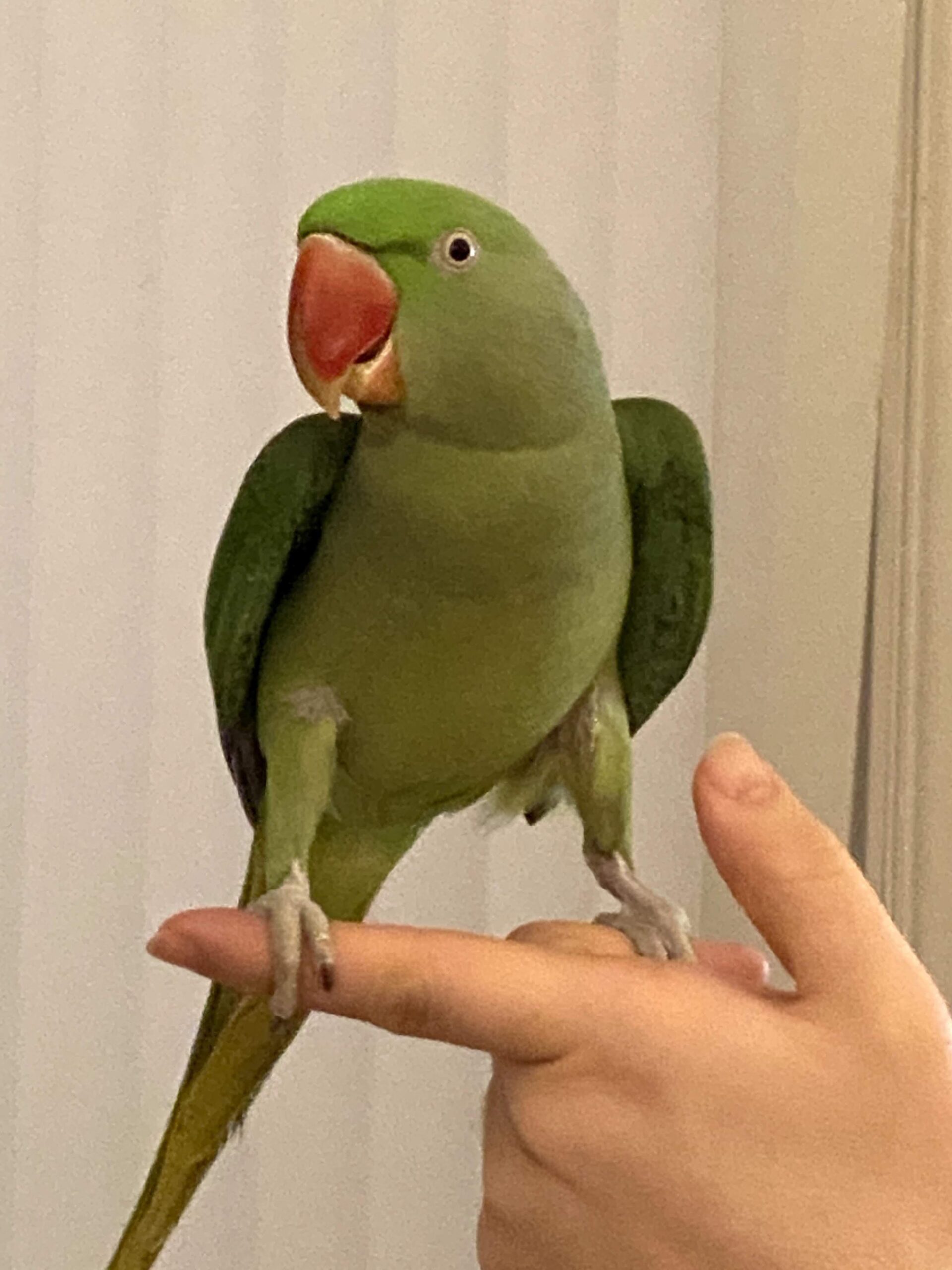Key Takeaways
-
Alexandrine parakeets are intelligent birds that can learn to talk with proper training.
-
Adopting an Alexandrine parakeet from a rescue group involves a thorough process to ensure a good match.
-
The initial cost for adopting an Alexandrine parakeet can range from $500 to $1,500, with additional expenses for care.
-
Alexandrine parakeets can live up to 40 years, so adopting one is a long-term commitment.
-
Choosing between an Alexandrine and a Ringneck parakeet depends on your personal preference and lifestyle compatibility.
Begin Your Journey with an Alexandrine Parakeet
Adopting a pet is a journey of love and commitment, and when it comes to adopting an Alexandrine parakeet, you’re in for an experience filled with vibrant colors, engaging sounds, and a long-lasting companionship. These parakeets, known for their playful nature and ability to mimic human speech, make delightful pets for those who are prepared to meet their needs for social interaction and mental stimulation.

“My Alexandrian Parrot climbs/runs …” from www.reddit.com and used with no modifications.
Alexandrine Parakeet Overview
Alexandrine parakeets are medium to large-sized parrots with a distinct personality. They boast a beautiful blend of greens and blues, with a characteristic maroon patch on their wings. Originating from the regions of India and Southeast Asia, these birds have been admired for centuries. They are named after Alexander the Great, who is believed to have transported them from Punjab to various parts of his empire.
Steps to Adopt Through a Rescue Group
Adopting an Alexandrine parakeet from a rescue group is a responsible choice. It’s not just about finding a pet; it’s about giving a second chance to a bird that may have lost its home. The adoption process can vary from one organization to another, but here’s a general guide on what to expect:
-
Research local parrot rescue groups or organizations that specialize in Alexandrine parakeets.
-
Complete an adoption application that includes questions about your living situation, bird care experience, and expectations.
-
Prepare for a home visit from the rescue group to ensure your living environment is safe and suitable for a parakeet.
-
Meet potential parakeet candidates and spend time with them to gauge compatibility.
-
Discuss the parakeet’s history, health, and behavior with the rescue staff to understand its needs.
-
Complete the adoption paperwork and pay the adoption fee, which contributes to the rescue’s ongoing efforts.
Remember, patience is key during this process. The goal is to find the best match for both you and the bird.
Investing in an Alexandrine Parakeet: Costs to Consider
Initial Adoption Fees
The adoption fee for an Alexandrine parakeet typically ranges from $500 to $1,500. This fee helps cover the costs of care the rescue has already provided, such as veterinary check-ups, a balanced diet, and any necessary rehabilitation.
Long-Term Care Expenses
After the initial adoption fee, you’ll need to budget for ongoing expenses to keep your Alexandrine parakeet healthy and happy. These include:
-
Quality bird food, such as pellets, seeds, and fresh fruits and vegetables.
-
A spacious cage with plenty of room for your bird to move around and spread its wings.
-
Regular veterinary check-ups to monitor the parakeet’s health.
-
Toys and accessories to provide mental stimulation and prevent boredom.
Setting aside a monthly budget for these expenses will help ensure you can provide the best care for your feathered friend.
Understanding Parrot Speech
Parrots are among the most fascinating birds due to their ability to mimic human speech. The Alexandrine parakeet is no exception. This ability is not just imitation; it’s a complex form of communication that involves listening, learning, and practice. Parrots have a syrinx, which is their vocal organ, and it allows them to produce a wide range of sounds, including human words.
It’s important to note that not all Alexandrine parakeets will talk; it’s a trait that varies from bird to bird. Some may start mimicking sounds as early as four months old, while others may take a bit longer. The environment plays a significant role in this: a talkative family is more likely to encourage a parrot to speak. Consistent interaction and reinforcement are key to developing your Alexandrine’s speaking abilities.
When parakeets do talk, it’s often because they’re social creatures seeking interaction. They might start by mimicking simple sounds or whistles and gradually move on to words and phrases. They’re particularly good at picking up on frequently heard words or those spoken with emotional emphasis. Therefore, the more you talk to your parakeet, the more likely it is to try and communicate back.
Remember, while the ability to talk is a delightful trait, it shouldn’t be the sole reason for adopting an Alexandrine parakeet. These birds require attention, social interaction, and mental stimulation, whether they speak or not.
Training Your Alexandrine to Talk
Training an Alexandrine parakeet to talk requires patience, repetition, and positive reinforcement. Start by frequently speaking to your bird in a clear, enthusiastic voice. Pick simple words or phrases to repeat often, such as ‘hello’ or the bird’s name. It’s also beneficial to associate words with actions or objects to help your bird understand context.
Positive reinforcement is crucial. When your Alexandrine attempts to mimic you or succeeds in saying a word, reward it with treats or affection. This will encourage the bird to continue trying. Consistency in training sessions is also vital – even just a few minutes several times a day can lead to progress.
Alexandrine vs Ringneck: Choosing Your Feathered Companion
When deciding between an Alexandrine parakeet and a Ringneck parakeet, it’s important to consider their similarities and differences. Both species are known for their beauty and intelligence, but there are nuances in their behavior and care requirements that might make one a better fit for you than the other.
Alexandrines are larger than Ringnecks and tend to be less aggressive, making them potentially better companions for families. Ringnecks, on the other hand, may be more suitable for experienced bird owners due to their strong personalities. The choice ultimately comes down to personal preference and which bird’s traits align better with your lifestyle.
Physical Characteristics and Behaviors
Alexandrine parakeets are distinguished by their larger size, longer tails, and a more pronounced red patch on their wings compared to Ringnecks. They are also known to be less nippy and generally have a calmer demeanor. Ringnecks are smaller, with shorter tails and a variety of color mutations.
Behaviorally, Alexandrines are social, enjoy interaction, and require plenty of mental stimulation to stay happy. Ringnecks are known for being a bit more independent and may require additional patience during training due to their assertive nature.
Compatibility with Families and Lifestyles
When bringing a parakeet into your home, consider your family dynamics and daily routine. Alexandrine parakeets, with their friendly and less aggressive nature, can be a good match for families with children. They thrive on social interaction and can form strong bonds with multiple family members.
On the other hand, Ringnecks may be better suited for individuals or families without young children. They can sometimes be territorial and may bond closely with a single person, making them more of a one-on-one companion.
Besides that, think about the time you can dedicate to your pet. Both Alexandrine and Ringneck parakeets require daily interaction, but Alexandrines might demand more attention due to their sociable nature.
Example: An Alexandrine parakeet named Kiwi learned to say ‘I love you’ after hearing her owner repeat the phrase daily with affection. Kiwi would then use the phrase to greet her owner every morning, showcasing the bird’s ability to associate words with meaning and emotion.
The Alexandrine Parakeet Lifespan: A Commitment for Life
Adopting an Alexandrine parakeet is not just a decision for today; it’s a commitment that can span several decades. These birds have an impressive lifespan, often living up to 40 years with proper care. This means that adopting an Alexandrine is a long-term commitment, akin to adding a new member to your family for potentially the next few generations. For those considering bringing a parrot into their home, it’s important to understand the harmony between poodles and parrots, as many families have both as pets.
Fact: The oldest recorded Alexandrine parakeet lived to be over 50 years old in captivity, illustrating the potential for an exceptionally long life when cared for properly.
Before adopting, it’s crucial to consider your future plans and whether you can provide a stable, loving home for the entirety of your parakeet’s life. This includes planning for life changes such as moves, family additions, or changes in work schedules.
It’s also worth considering who will care for your bird if you’re unable to do so temporarily or permanently. Setting up a pet trust or finding a designated caregiver can ensure your Alexandrine’s well-being for its entire life.
Factors Influencing Longevity
The lifespan of an Alexandrine parakeet is influenced by several factors, including genetics, diet, exercise, and mental stimulation. A balanced diet rich in nutrients is essential for long-term health, as is regular veterinary care to prevent and treat any potential health issues.
Exercise and mental stimulation also play a significant role in a parakeet’s longevity. Providing a large cage with space to fly, along with toys and puzzles, can help keep your Alexandrine physically active and mentally sharp. Social interaction is just as important; these birds are social creatures that need regular interaction with their human family to thrive.
Creating a Nurturing Environment for Longevity
Creating the right environment for an Alexandrine parakeet is crucial for its longevity. This goes beyond the physical space; it’s about creating a nurturing atmosphere where the parakeet feels safe, loved, and stimulated. Regular interaction with your bird, providing a varied diet, and ensuring it gets enough exercise are all part of this nurturing environment. Most importantly, be prepared to adapt and learn as you go, as each bird is unique and may have its own specific needs and preferences.
Frequently Asked Questions (FAQ)
What should you know before adopting an Alexandrine Parakeet?
Before adopting an Alexandrine Parakeet, you should know that these birds require a significant amount of daily interaction and mental stimulation. They thrive on social engagement and can develop behavioral issues if neglected. You also need to be prepared for their long lifespan, which can reach up to 40 years, meaning a long-term commitment is necessary. Additionally, Alexandrine parakeets can be quite vocal and are not the best choice for those living in apartments or close quarters.
How often do Alexandrine Parakeets need social interaction?
Alexandrine Parakeets need daily social interaction to remain happy and healthy. They are social creatures that bond closely with their human companions. Ideally, they should be allowed out of their cage for several hours each day under supervision to interact with the family, explore, and play. Neglecting their need for interaction can lead to loneliness, depression, and behavioral issues.
What is the ideal diet for an Alexandrine Parakeet?
The ideal diet for an Alexandrine Parakeet includes a balanced mix of high-quality pellets, fresh fruits, and vegetables. It’s important to provide a variety of foods to ensure they receive all the necessary nutrients. Occasional treats like nuts and seeds can be offered, but should be given sparingly. Always ensure fresh water is available, and avoid foods that are toxic to birds, such as avocado, chocolate, and caffeine.
Do Alexandrine Parakeets require special veterinary care?
Like all pets, Alexandrine Parakeets require regular veterinary care from an avian specialist. Routine check-ups can help catch any health issues early on. It’s also essential to keep up with any recommended vaccinations and parasite control. Special attention should be given to signs of illness, as birds often hide their symptoms until they are quite sick.
How can you tell if a rescue group for parakeets is reputable?
To determine if a parakeet rescue group is reputable, look for transparency in their operations, a clear adoption process, and a focus on the well-being of the birds. A reputable rescue will conduct thorough interviews with potential adopters, offer extensive information about the care and history of the birds, and provide post-adoption support. They should also be willing to take the bird back if the adoption doesn’t work out. Checking reviews and asking for references from other adopters can also provide insight into the rescue’s reputation.
Adopting an Alexandrine Parakeet can be a rewarding experience, offering years of companionship and joy. With the right knowledge and preparation, you can ensure a happy and healthy life for your new feathered friend. Remember, adoption is just the beginning of a remarkable journey that requires dedication, patience, and love.


